By Tom Wintaugh | April 17, 2023

See why top ecommerce brands use Miva’s no-code platform to run
multiple stores, manage massive catalogs, and grow their revenue.
It’s not all about the images...compelling product copy is also essential for driving sales and business growth in the highly competitive ecommerce landscape. This is nothing new—written advertising copy has a long history as a central component of commercial sales, dating back to the early 1700s. Today, the need for large amounts of product copy, especially for sellers with large inventory counts, has led many to hunt for a product description generator to save time and streamline the content creation process. In this blog, we'll outline 8 important ways to use these tools (or your pen) to shape product descriptions effectively, by always keeping your customer top of mind.
Whether it's product, homepage, branding, or marketing copy, the most effective written content keeps customer focus front and center. By orienting copy to the direct needs, expectations, and buying habits of your customers, you can streamline their buying process, answer their questions quickly, and make the pathway to a great solution clear. We wrote about all of the components of excellent ecommerce branding here. No matter what types of content generating tools you use to assist you, here are 8 elements of effective product copy which support an outstanding shopping experience and lead the way to conversion:
Great product copy is easy to understand and makes your customers’ shopping experience fast and efficient. Skip excessive adjectives and create concise product descriptions which quickly communicate the key features, benefits, technical specifications, and use cases for your products. This is especially important when marketing to B2B buyers.
Example: "This heavy-duty floor jack lifts up to 3 tons, making it perfect for automotive repairs."
Best Practice: Keep your sentences short and simple, avoiding dense jargon or over-the-top accolades.
Captivating product descriptions connect with the reader on an emotional level, addressing their desires and pain points. Whether you are writing copy yourself or prompting a product description generator, look for ways to weave emotional cues into copy, creating a human context for how to understand and experience your products.
Example: "Indulge in the rich taste of our gourmet dark chocolate truffles."
Best Practice: Identify the emotions your product evokes, such as comfort, excitement, or security, and incorporate them into your copy.
Compelling product copy should always include a strong call-to-action that encourages customers to make a purchase (or take another action such as “learn more”). Powerful calls-to-action which align with your brand messaging and drive conversions in a direct, no-nonsense way actually make it easier for customers to understand the next action to take. Read more about proven conversion driving techniques here.
Example: "Upgrade your kitchen with our sleek stainless steel cookware set!"
Best Practice: Lead with simple, action-oriented verbs which encourage customers to take the next step, like "buy," "shop," or "discover."
Maintaining a consistent brand voice across all product descriptions reinforces your brand identity and creates continuity for customers. New product descriptions must be customized to match your brand's tone and style, especially if you are using a product description generator to write content.
Example: "Our artisanal, handcrafted candles bring warmth and serenity to any space."
Best Practice: Develop a style guide for your brand to ensure consistency in tone, language, and messaging.
It doesn’t matter how well-written your copy is if people can’t find it. Optimizing your product copy for search engines is essential for improving visibility and attracting potential customers. Effective search engine optimization begins with the choice of relevant keyword, but always relies upon being relevant to what real customers are searching for.
Example: "Eco-friendly bamboo cutting boards in various sizes and styles." (Keyword is “bamboo cutting boards”)
Best Practice: Use keyword research tools to identify relevant and high-traffic keywords for your product category, and organically incorporate them into how you describe products.
Effective product copy should clearly highlight your product's USP, setting it apart from competitors. Identify and emphasize the unique features of your products that make them stand out in the market, and phrase them in the form of benefits for the customer. This is perhaps the most effective product copy best practice of them all, as it helps customers understand exactly why they should choose your product.
Example: "Our industrial-grade air compressor delivers reliable, high-performance operation which requires less maintenance and lower yearly repair costs."
Best Practice: Determine how and why customers will use the features or benefits which set your product apart from competitors, and highlight those use cases in your copy.
Great product copy is not only well-written but also visually appealing. Product description generators can help create structured and easy-to-read copy, but it’s also important to consider specific layout of text on each page. Use bullet points, headings, and white space to improve readability and make the content more engaging for readers.
Example (bullet list copy):
Best Practice: Use bullet points, headings, and white space to break up large blocks of text and improve readability.
High-quality product copy should be free of errors and grammatical mistakes. Double and triple-check all copy prior to publishing, correcting errors and ensuring your copy is polished and professional. If customers are distracted by bad grammar or spelling, they aren’t focusing on your product.
Example: "These all-purpose cleaning wipes effectively remove dirt and grime from a variety of surfaces, including linoleum, porcelain, and stainless steel."
Best Practice: Always proofread your copy or use grammar/spelling checking tools to catch errors—it’s worth the extra time if you catch even a single mistake.
Crafting product copy that speaks directly to your target audience, addresses their pain points, and showcases the benefits of your product is essential for driving conversions and fostering brand loyalty. While you should leverage the latest tools, technology, and automation to streamline your processes and enhance your online presence, effectiveness hinges upon applying these advancements with a customer focus. Whether you use a product description generator or craft your copy by hand, thinking about the specific kinds of information that customers are looking for will help you deliver a superior customer experience that leads to easy shopping for your customers, and long-term success for your ecommerce business.

Katy Ellquist, Miva’s Digital Marketing Strategist, is an accomplished writer, marketer, and social media analyst who has created sophisticated content campaigns for a broad range of professional clients. She brings to Miva a complex understanding of ecommerce trends and techniques, building upon extensive digital agency experience and a prior role as direct liaison to Miva’s top accounts. Katy is a regular contributor to the Miva blog, covering essential ecommerce topics like design & development strategy, site optimization, and omnichannel selling, with the goal of increasing the actionable knowledgebase of the entire Miva community.
Love it? Share it!
No worries, download the PDF version now and enjoy your reading later...
Download PDF